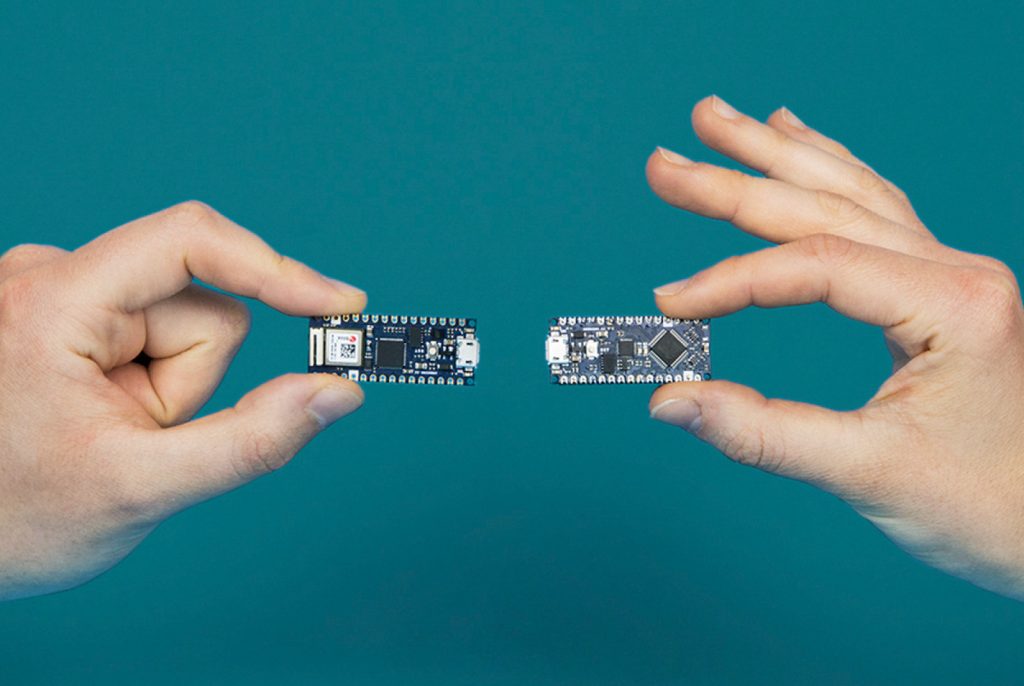- How to Adjust X and Y Axis Scale in Arduino Serial Plotter (No Extra Software Needed)Posted 7 months ago
- Elettronici Entusiasti: Inspiring Makers at Maker Faire Rome 2024Posted 7 months ago
- makeITcircular 2024 content launched – Part of Maker Faire Rome 2024Posted 9 months ago
- Application For Maker Faire Rome 2024: Deadline June 20thPosted 11 months ago
- Building a 3D Digital Clock with ArduinoPosted 1 year ago
- Creating a controller for Minecraft with realistic body movements using ArduinoPosted 1 year ago
- Snowflake with ArduinoPosted 1 year ago
- Holographic Christmas TreePosted 1 year ago
- Segstick: Build Your Own Self-Balancing Vehicle in Just 2 Days with ArduinoPosted 1 year ago
- ZSWatch: An Open-Source Smartwatch Project Based on the Zephyr Operating SystemPosted 1 year ago
Four New Affordable and Powerful Arduino Nano Boards

Arduino announced a new family of affordable, low-power Nano sized microcontroller boards based on powerful Arm Cortex processors that may give you pause before buying another Chinese knockoff. Co-founder of Arduino Massimo Banzi said the new boards will meet demand for low-cost but capable microcontrollers for DIY hardware.
All the new boards boast low energy consumption and processors more powerful than what the classic has. Even better, they’re all pretty affordable: the most basic entry called Nano Every, which you can use for “everyday” projects and can replace the classic Nano, will even set you back as little as $9.90.
The boards in the new Nano family are:
- Arduino Nano Every: it costs $9.90 and is based on the ATMega4809 microcontroller. It runs at 20 Mhz and comes with 48KB of Flash and 6KB of RAM.
- Arduino Nano 33 IoT: it costs $18, offering Wi-Fi and Bluetooth connectivity. It’s powered by the SAMD21G18A microcontroller, runs up to 48 MHz with 256KB of flash and 32KB of RAM.
- Arduino Nano 33 BLE: it costs $19 and as the name suggests its key feature is Bluetooth support, making it ideal for “short range BT interactions and power-savvy projects”. It’s built around the nRF52480 microcontroller and runs at 64MHz with 1MB flash and 256KB of RAM.
- Arduino Nano BLE Sense: it costs $29.50 and comes with a range of extra sensors to support wearable device and gesture-based projects. Otherwise it has the same basic tech specs as the BLE model. The additional sensors include a nine-axis Inertial Measurement Unit, as well as temperature, pressure, humidity, light, color, and gestures sensors.
Further information are available on official Arduino Blog announcement post.
















